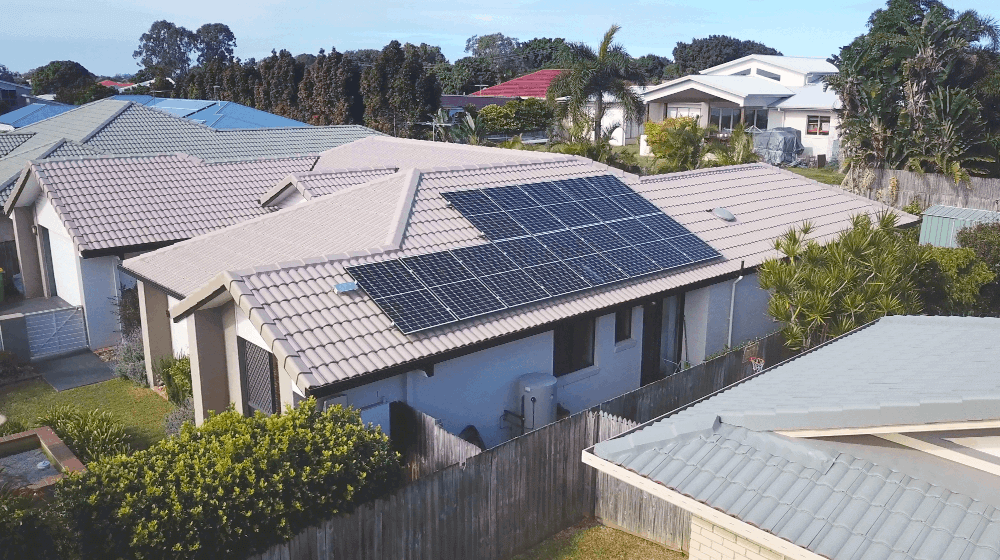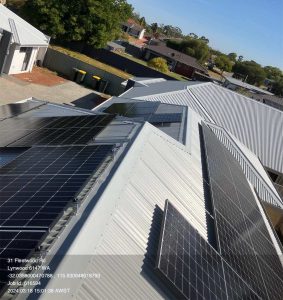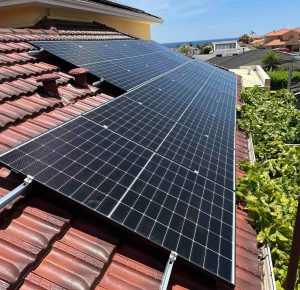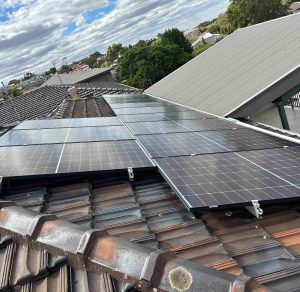Embarking on the solar journey? Choosing the correct solar panel wattage between 370W and 440W for your rooftop system sparks an important debate. Imagine these panels as your solar allies, each with its unique prowess. The 370W, a reliable companion with a balanced output, akin to a steady friend. On the other hand, the 440W, a powerhouse ready to materialise your solar goals, is reminiscent of an enthusiastic teammate. We will try to unravel the strengths of both, guiding you toward the optimal choice for an energy-efficient triumph. Let’s illuminate your path to a sustainable and powerful solar future!
Power Output: The most obvious difference is the power output. A 440W solar panel will generate more electricity than a 370W panel under similar conditions. This means that with 440W panels, you can generate more power and potentially cover a larger portion of your energy needs.
Space Usage: Generally, higher-wattage panels are more space-efficient. A 440W panel would produce more power per unit area compared to a 370W panel. This is crucial for residential installations where roof space may be limited.
Number of Panels: With higher wattage panels, you would need fewer panels to achieve a certain power output. This can be advantageous if you have a limited roof space or if you want to maximize power production with fewer panels.
Installation Cost: The installation cost might be slightly higher for 440W panels due to their increased size and weight. However, this could be offset by needing fewer panels overall.
System Performance: A system with 440W panels might perform better in low-light conditions or partial shading situations. Higher wattage panels often come with more advanced technologies, like better efficiency ratings and enhanced performance features.
Compatibility: Ensure that your existing inverter and other system components are compatible with higher wattage panels. Upgrading to higher-wattage panels might require adjustments or replacements in other parts of your solar power system.
Government Incentives: Check if there are any government incentives or rebates for using higher efficiency panels. In some cases, the government may offer additional benefits for using more advanced solar technologies. Check with local solar installers.
Durability and Warranty: Higher wattage panels may come with better build quality and longer warranties. Consider the warranty period and the reputation of the manufacturer when making your decision.
Climate Considerations: Consider the climate in your region. Some panels perform better in high temperatures, while others may be more efficient in cooler conditions. Choose panels that suit the specific climate of your location.
Price: Compare the cost per watt for both 370W and 440W panels. While the initial cost might be higher for 440W panels, the cost per watt could be more competitive or even lower, considering the higher power output.
In summary, the choice between 370W and 440W solar panels depends on your specific needs, available roof space, budget, and the efficiency of your current solar power system components. Higher wattage panels often offer better performance and efficiency, but it’s essential to evaluate the overall cost-effectiveness for your situation.
How Solar panel wattage is affecting your system
Solar panel wattage is the heartbeat of your solar energy system, dictating its performance and efficiency. Think of it as the engine driving your energy independence. The wattage directly influences how much sunlight your panels can convert into electricity, determining the system’s overall electricity production.
Opting for higher-wattage panels, like 440W, injects a robust energy surge into your setup, maximizing power generation. This means more energy is harvested even in limited space. Conversely, 370W panels provide a dependable, balanced solar panel output. The choice boils down to your energy goals and available space, as the wattage significantly impacts your system’s capacity to harness the sunlight.
Solar panel output (energy production) and wattage
The wattage of a solar panel directly influences its energy production or output. In simple terms, a higher-wattage panel can generate more electricity than a lower-wattage one under the same conditions. The wattage of a solar panel is a measure of its power capacity, indicating how much energy it can produce per unit of time.
For example, the impressive addition to the fleet of the latest solar panels, a 440W solar panel has a higher capacity to convert sunlight into electricity compared to a 370W panel. This higher wattage can be advantageous, especially in situations where space for installation is limited, as it allows you to generate more power from fewer panels.
In summary, when considering solar panels, balancing your energy needs with available space is crucial, and selecting panels with an appropriate wattage helps optimize the overall energy production of your solar system.
Solar power Calculation and factors affecting the Output
Calculating solar panel output involves several factors, and it can differ in real conditions from controlled testing conditions. But, if you know how to read product specification documents, then you might find these values that may help you in determining solar power output.
- Solar Irradiance: The amount of sunlight reaching a specific area affects energy production. This varies based on location and place of installation, time of day, and weather conditions.
- Panel Efficiency: Higher efficiency means more energy production for the same sunlight exposure and it may reach as much as 23% in the latest versions.
- Solar Panel Wattage: The total capacity of your solar PV system, measured in watts (W) or kilowatts (kW), determines overall productivity.
- Tilt and Orientation: The angle and orientation of your solar panels impact their exposure to sunlight. Generally, solar panels are installed an angle of 30 to 45 degrees or similar to the latitude of your home.
- Shading: Shadows on solar panels reduce output significantly. Even partial shading can have a substantial impact on overall system efficiency.
- Temperature coefficient: Solar panels operate most efficiently in cooler temperatures. High temperatures can decrease their efficiency and output. It means you can determine exactly how much productivity your solar panel can lose due to temperature. If the system has a temperature coefficient of 0.4% assuming it performs optimally at 25 degrees, your system can lose 30 degrees X 0.4= 12% of power that it produces because of a 5-degree temperature rise.
To calculate solar power output, find the above-mentioned values and put it in the following formula:
Energy Output (kWh)= Solar Irradiance × Panel Efficiency × System Capacity x Performance Ratio
Understanding and optimizing these factors can help you estimate and maximize the energy production of your solar power system. However, it would be best to consult a solar professional who can provide a more accurate assessment based on your specific circumstances.
How to find the right size of solar system that fits for you
Choosing the right size for your solar system is the key to energy savings. The 6.6kW system is a popular choice in Australia due to its affordability, versatility in fitting most roofs, and easy grid connection approval. To determine if it’s right for you, consider your quarterly bills, location, and available roof space. A 6.6kW system with the latest solar panel wattage of 440W will require 15-18 panels. It can potentially reduce bills by 80-90% and fit in relatively small space than a 370W panel. Ensure your roof has 30-36m² of unobstructed space, facing north, west, or east for maximum efficiency.
To make a 6.6kW solar system more formidable, pair it with a 5kW inverter. This combination may burn a hole now but it is worth it if you are looking for sustainable and long-term investment.
How many 440W panels are required for my rooftop solar system
To determine how many 440W solar panels you need for your rooftop solar system, you can use the following formula. Let’s say you want to install a 6.6kW solar system using 440W panels:
Number of Panels
Number of panels= Individual Panel Wattage / Desired System Size
For example, if you aim for a 6.6kW system (6600W) and have 440W panels:
Number of Panels = 6600W/ 440W
= 16.5 i.e. approximately 17 panels
So, you would need approximately 17 of the 440W panels for a 6.6kW rooftop solar system. Keep in mind that this is a general calculation, and actual requirements may vary based on factors like panel efficiency, available sunlight, and specific system configurations. Moreover, a solar panel wattage of 440 would save a significant chunk of your rooftop where you can enjoy a starry night or a view of the fairy lights on Christmas!









